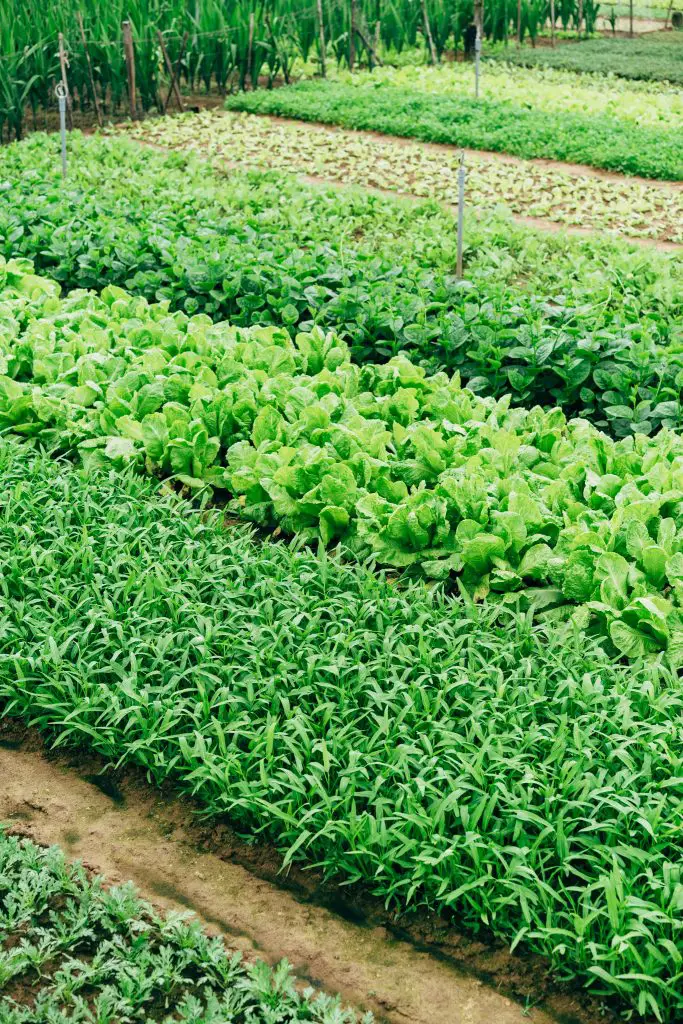Arugula Vs Rocket: Are They The Same Thing? Arugula and Rocket are both popular leafy greens that are used commonly in garden salads. They add a spicy peppery flavour that is pungent to a salad adding interest and flavour. However, is Arugula just another name for Rocket is there actually a difference?
Arugula is commonly referred to in places like the UK and Australia as Rocket lettuce. This plant also has a number of other aliases which include Ruchetta, Rucola, Rugula, Colewort, and Roquette. The name rocket is believed to have been derived from the french name for the vegetable which was Roquette.
Whether this is actually true is somewhat unclear however it is common to see different varieties of the plants are being referred to by all those names. You can see this by visiting our vegetable database which has a range of varieties that are available in the marketplace.

About Arugula
The plant itself is a member of the brassica family that typically grows approximately 8 to 40 inches depending upon the specific variety. The plant has deeply lobed leaves which give it a distinctive shape that distinguishes it from other leafy greens such as lettuce.
Arugula has been grown since roman times and is mentioned in the literature as being an aphrodisiac. It was initially collected from the wild before becoming a common feature in many herb gardens alongside plants such as parsley and chives.
Is Arugula Easy To Grow?
Arugula is an extremely easy plant to grow and it is commonly sown directly into the garden in the cooler months of the year because it germinates quickly producing a crop within 6 to 8 weeks. It is often used by gardeners to supplement their lettuce crops in the cooler months of the year because of its rapid growth.
However, arugula is renowned for bolting in hot weather which makes it generally unsuitable to grow in the summer.

Growing Arugula From Seed
Arugula is a common plant that can be purchased as a seed or seedling from your local garden centre. However, given its relatively fast growth, we most commonly recommend growing it from seed because it is quick and easy as mentioned above.
The plant can be started off in the garden or in a seed tray. Using seed trays to raise the plant is most useful in cases where you have a relatively small garden and limited space as this will reduce the amount of time that the Arugula spends in your garden which will optimize your output.
To start the seeds off in a seed tray start by filling the tray with a good quality seed raising mix. The type of seed tray that should be used is an open flat tray rather than a modular cell tray with individual cells the reason for this is that it will make the transfer of long rows of arugula much quicker and easier.
Create a shallow furrow with a pen or an icy pole stick. In most standard seed trays you should be able to fit 5 to 6 furrows in a tray that are approximately an inch or two apart. Sprinkle the seed into the furrow ensuring that it is sown relatively fine along its length.

Cover the seeds up with soil to ensure that they end up being at a depth of approximately half an inch. then water the seed. Once the seeds are planted you can typically expect to see the seedlings appear in 7 to 10 days though this does vary substantially depending upon the temperature.
Typically the seedlings will need to spend approximately 4 weeks in the seed tray before being transferred out into the garden. The quickest and easiest way to transfer the seedlings from the seed tray into the garden is to create a furrow in your garden bed and then pick up rows of the seedlings using a trowel and transfer them straight into the furrows. This ensures that root disturbance is minimized while making it an extremely quick process.
In terms of the location selected for planting arugula will tolerate conditions from full sun to partial shade as the plant does not need to flower to produce a crop. If you are living in a climate that has relatively hot days it is a good idea to plant at least some portion of your crop in a shady location as that will reduce the speed at which the plant bolts.
Additionally, this will ensure that the period over which you can harvest the plant is also extended.

Once the arugula is transferred into the garden it will typically take approximately 4 to 6 weeks before you can begin to half the leaves. When harvesting the leaves it is best to pick the largest outer leaves first leaving the inner leaves to continue to grow and develop as this will provide an opportunity to take additional harvest later on. Leaving the inner leaves undisturbed on the plant will reduce the time between harvests which will generally increase the yield that you can get from the plants.
To maximize availability of arugula in your garden it is also a good idea to sow several batches over a few weeks to ensure you have two to three lots of arugula available throughout the season. These sowings can typically be done from midsummer through to mid-autumn and even a little bit later if you live in a relatively mild climate. Conversely, sewing can also be done in late winter and early spring.
I hope you found this article useful and have great success growing your Arugula or rocket. If you have any additional questions or comments please leave them in the section below.
Relevant Articles
Are Arugula And Spinach The Same Thing? What Is The Difference?
How Much Does An Arugula Plant Yield?
How Many Times Can You Harvest Lettuce? (It’s More Than You Think)
Can You Eat Lettuce After It Has Gone To Seed?
